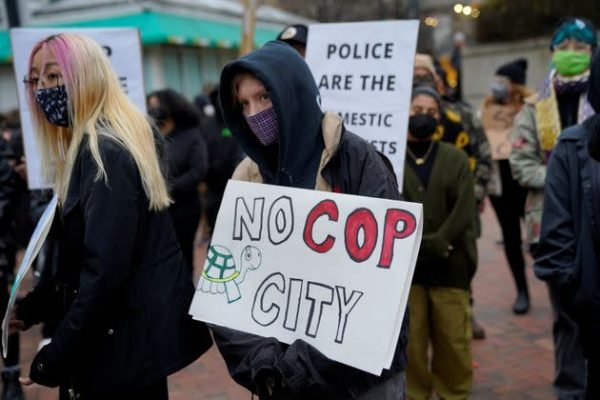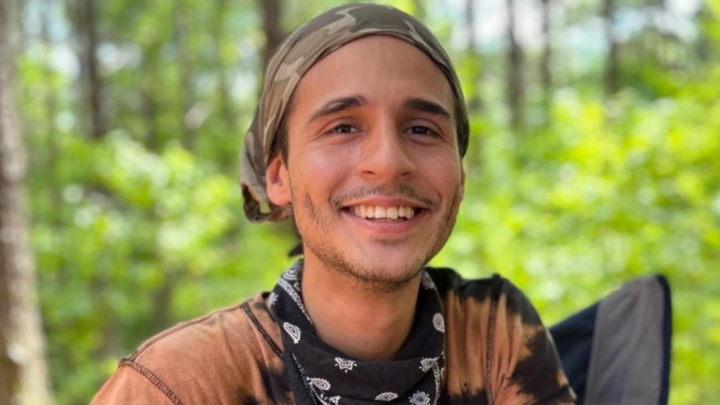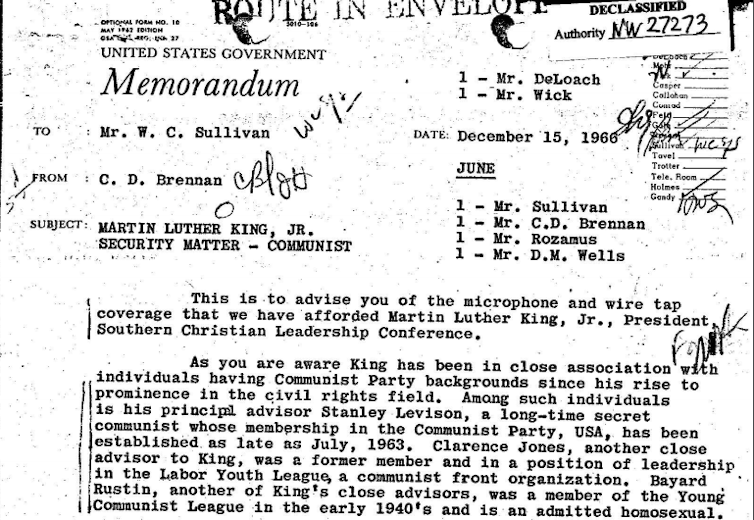Land defenders and justice movements everywhere will not be terrorized into silence. They will not let the story of their sibling’s murder be controlled by their killers, nor by the powers who hide behind the killers.
On the evening of January 21, a couple dozen people came out in the rain and grouped together in a circle outside of Whatcom District Court, in Bellingham, Washington. These members of the Bellingham Forest Defenders, a group working to defend a public forest called “Box of Rain”, peacefully gathered to mourn the death of a fellow forest defender on the other side of the country.
The vigil was held to mourn the death of Tort, a protestor in Atlanta, Georgia who was killed on January 18 by police while defending the Weelaunee Forest from clearcutting and construction of a massive police training facility, known as Cop City, to those who oppose it.
A Georgia Bureau of Investigation spokesperson claims that Tortuguita, a nonbinary person who had been a vocal proponent of nonviolence, refused orders to leave a tent and shot a state trooper. Other law enforcement officers then returned fire, killing them. No body cameras captured the event. “Although we have bodycam footage from the day of the operation, we do not have bodycam footage of the shooting incident. The law enforcement officers wearing bodycam were not close enough to the shooting itself to capture it,” GBI’s Nelly Miles said. Calls for an independent investigation are growing.
Forest defenders, like Tort, are occupying the forest by living in trees and destroying equipment to resist the building of the campus. The city calls them “domestic terrorists” and police treat them like enemy combatants.
Cop City will be a $90 million state-of-the-art police training facility into which major corporations are investing millions of dollars and financially pressuring politicians to push the plan forward. Though the land designated for Cop City is owned by the City of Atlanta, the nonprofit Atlanta Police Foundation is working to raise millions from private sector companies to fund over 80% of its construction. The Atlanta Police Foundation’s Board is filled with executives from nearly all of Atlanta’s big-name companies like Delta, Waffle House, the Home Depot, Georgia Pacific, Equifax, Carter, Accenture, Wells Fargo and UPS, among others. It reads like a ‘who’s-who’ of corporate Atlanta.
 defendtheatlantaforest.org
defendtheatlantaforest.orgThousands of miles away, at the edge of another precious forest ecosystem endangered by capital’s encroachment, Bellingham’s vigil participants did more than grieve. They honored their comrade by learning about the movement work being done in Atlanta and shared stories, songs, and poems of love and grief for protestors, for the forests, and for their communities. Information was also shared about ongoing local work to protect old, ecologically significant forests in Whatcom County and Western Washington.
One member of the Bellingham Forest Defenders, Hayley, commented, “While none of us knew Tort personally, his death by police has certainly hit many of us hard. We offer public solidarity with the movement in Atlanta while reminding ourselves of why we actively struggle to protect public forests here in Whatcom County. We hope that folks in Atlanta might see this coverage and know they are in our hearts and minds.”
Over the last few days, a growing number of such solidarity vigils have been held across the US, from Cincinnati to New Orleans to Los Angeles, by organizations and communities on the front lines of ecological destruction and racialized violence, where brutal, militarized police response to protesters has become commonplace. Declarations of international solidarity have come from as far as Germany, the UK, and Kurdistan. Tort’s death has made it clear that there is no place left on Earth where people do not share the pain and rage of ecocide and murder carried out on behalf of corporate and state powers.
These are just some of the multiplying events now sprouting up in cities and towns across the world…

Cincinnati

New Orleans

Knoxville

Los Angeles

Akron

Dallas

New York City

Chattanooga

Miami

Tallahassee

Massachusetts

Philadelphia

Pontiac

St. Louis

London

Berlin

Anonymous

Rojava

The international outpouring of rage and solidarity at this most recent act of police brutality has a common thread – that land defenders and justice movements everywhere will not be terrorized into silence. They will not let the story of their sibling’s murder be controlled by their killers, nor by the powers who hide behind the killers. The Atlanta Forest Defenders and other local organizations like Community Movement Builders have begun publicly demanding an independent investigation into Tort’s death, into the charges of domestic terrorism for arrested forest defenders, and into the wider police raid of January 18th.

Further outrage and support is coming from diverse groups beyond land defenders and social movements. It turns out, you don’t need to be a police abolitionist or even an environmentalist to oppose Cop City – but Cop City is creating more police abolitionists and environmentalists. On Jan 23, Doctors from Emory’s School of Medicine published this scathing condemnation:
“As health care workers, we strongly condemn the repeated escalation of police violence in their interactions with members of the public protesting the construction of Cop City. On various instances, in both the streets of Atlanta as well as in the Weelaunee Forest/Intrenchment Creek Park which is under threat of destruction, police have used violence including reports of toxic chemical irritants such as tear gas, rubber bullets and now live ammunition which most recently resulted in the police killing of one of the forest defenders, Manuel ‘Tortuguita’ Teran. A year after police in the U.S. killed more people than any prior year since records started to be tracked in 2013, we recognize violence perpetrated by police to be harmful to public health. We are also concerned by the detentions and the charges of domestic terrorism levied at individuals arrested while protesting the destruction of the forest. This fits within the context of a disturbing pattern and threat to public health whereby the USA has one of the highest incarceration rates in the world; perpetuated by a judicial and legislative system that targets Black and Indigenous peoples, migrants, those living in poverty, those who are unhoused, as well as environmental and social activists.
The construction of Cop City will not solve a government’s failures to listen to the wishes of members of the community, its failure to stop the widening gap between rich and poor, the lack of affordable housing, the negative effects of gentrification and racism, or the poor and unequal access to nutritious food, healthcare and mental health services. As physicians, we recognize that these failures have negative consequences on the public’s mental and physical health. Instead of strengthening community health, Cop City will be a dangerous attempt to invest in harmful and violent solutions, strengthening the corporate and political powers that seek profit over the well-being of the people, while simultaneously eroding and transforming natural and public spaces into privately owned property. The public health evidence for developing healthy and thriving communities strongly opposes the expansion of policing and its subsequent violence. All Atlanta communities deserve more life affirming investments, not those that value private property over human life.
For the well-being of the city and its residents, it is imperative that all police forces cease their continued escalation and violent activity by permanently withdrawing from the forest. We call on Georgia State University to end its support of the Cop City project and also the Georgia International Law Enforcement Exchange (GILEE) project. We also call on Atlanta mayor Andre Dickens, the Atlanta city council and the Dekalb County government to withdraw from all plans regarding the construction of Cop City; and for the Dekalb County government to withdraw from the land swap with Ryan Millsap and instead keep Intrenchment Creek Park a public park. We also call on Brasfield & Gorrie to end their contract with the Atlanta Police Foundation and cease all construction that furthers the destruction of the forest which has and will harm the community and the public health.
Signed,
Michel Khoury, MD, Co-director of Georgia Human Rights Clinic
Amy Zeidan, MD, Co-director of Georgia Human Rights Clinic
Mark Spencer, MD, Co-Leader, Internal Medicine Advocacy Group
Suhaib Abaza, MD, Co-founder, Campaign Against Racism ATL chapter
Social Medicine Consortium”

If one life might become a beacon to galvanize a movement, we owe it to that life to pause and mourn their death. Rejoining the circle of forest friends holding hands in the rain, the below speeches were shared during Saturday’s vigil by Bellingham Forest Defenders in memory of Tort and in solidarity with all who are on the front lines of direct-action…
Carly, Bellingham Forest Defender:
“In the anarchist group Invisible Committee’s piece To Our Friends, they say:
“’Friend’ and ‘free’ in English … come from the same Indo-European root, which conveys the idea of a shared power that grows. Being free and having ties was one and the same thing. I am free because I have ties, because I am linked to a reality greater than me.”
Forest defense movements in Bellingham have given me freedom through my friends. My friends have shown me how radical love can be fuel for movements. In bowls of homemade soup, in tightly linked arms on frontlines, in holding my hand when news like Tort’s death comes. My friends trust each other to keep momentum building, to bring each other along, especially when we falter in the face of everything working against us. I want to share with you some words from Tortuguita’s friends and comrades in hopes that by sharing parts of their love and grief, we can help carry everyone touched by Tort’s death along with us as we keep building momentum for a more just future, one that Tort lived and died fighting for.
The first reads:
“I remember Tortuguita as one of the softest and most generous people in the woods, a perpetually positive presence, ready with a smile and anything else they could offer to brighten your day. They were an optimist, assuming the best of people and demonstrating through their own actions just how good humans can be. I miss them already. Condolences and solidarity to all their family, friends, and comrades. We lost one of our best.”
The second reads:
“I didn’t know Tort for very long, but I am honored to have met them. In the short time I knew them, they were constantly putting a smile on my face, they had a laugh that was so infectious and always wanted to help others however they could. They had a deep love for music and would send me whatever their favorite song was at the moment. They were sweet, kind, and believed in a better world for all and the generations that will come after us, free from violence, destruction, and evil. Their love for the forest should be instilled in all of us, and their passion for protecting human life is an example we should all look up to. You fought hard, friend, and brought so much good to this world; now it’s time for you to rest, we will carry on your legacy and ensure you are never forgotten.”
Building strong community ties and a deep connection to place is vital in standing for the protection of old forests across the country and in Western Washington. We would love to have you along in this work, which involves seeking out threatened forests and standing up for them in front of decision and policy makers. This momentum for forests and for the communities that depend on them for clean water and air, connection to place, and habitat support is building. Moments like this, when we lose a comrade, however far away, offer time to pause, grieve, and gather ourselves to keep the fight going. Thank you for being here.”

Sophie, Bellingham Forest Defender:
“Tortuguita was a friend, lover, street medic, mutual aid organizer, and forest defender. They were loved and cherished deeply by the people in their lives and the movements they were a part of. Known as Manual Teran, they chose the alias ‘Tortuguita’ for themselves because it means Little Turtle, and is a nod to the Indigenous man who led victorious Native American resistance to white settlement in the Ohio river valley.
On January 18th, Tortuguita was tragically killed at the hands of the police while camped in the Welaunee forest in Georgia, where they and other protestors had been living in community since November of 2021 in order to stop the development of what is nicknamed “Cop City”. Cop city is proposed to be the largest police training facility in the United States, which plans to include military-grade training facilities, a mock city to practice urban warfare and riot control, and dozens of shooting ranges – it’s not a coincidence that cop city is being built in Atlanta, a city that lost two thirds of its police force in the midst and wake of the BLM riots.
The death of Tortuguita is a heart wrenching and brutal reminder that the work people do to preserve and generate life can be dangerous, traumatizing, and sometimes even fatal – especially when it’s effective, especially when we are winning. We mourn the death of Tortuguita because they were a kind, brave, and loving person who did not deserve to die, and we also mourn their death so that the work they did and the example they set is not forgotten, so that we remember the power and importance of resistance and relationship. The protests in the Welaunee forests are not just about stopping one violent project or saving one forest, they are about the collective power and responsibility we have to implement, for ourselves, the systems of care and community that will sustain our world.
In Tortuguita’s honor, we will keep creating poetry and art, participating in mutual aid, fighting for abolition, mending, knocking down borders, transitioning, putting our bodies in between the state and its victims, and building radical models of care and community. At the foundation of all this is deep and loving support for one another, until the systems in place become irrelevant. The state’s interests are not and have never been the preservation of life, equity, or prosperity. The state’s aims are to maintain power and generate capital, and in its attempt to do this it does not care about who or what is hurt along the way.
Today and everyday we remember those who were killed at the hands of the police. The following names are a few of those who have died because they were either working to rebuild a faulty nation, or simply surviving in it. May they inspire us to continue to work towards a world where there are no police and no need for cop cities or coal terminals or prisons.
George Floyd
Breonna Taylor
Trayvon Martin
Fred Hampton
Mark Clark
Oscar Leon Sanchez
Keenan Anderson
Dante Wright
Andre Hill
Manuel Ellis
Aura Rosser
Atatiana Jefferson
and Manual Teran, or Tortuguita
Please join me in a minute of silence. In this time, if you would like to speak out a name to add to this list, please feel free to do so.”
Reach out to Weelaunee Forest Defenders or Community Movement Builders in Atlanta, to bellinghamforestdefense@gmail.com or the Center for Responsible Forestry in Bellingham, or to an organization close to home.









